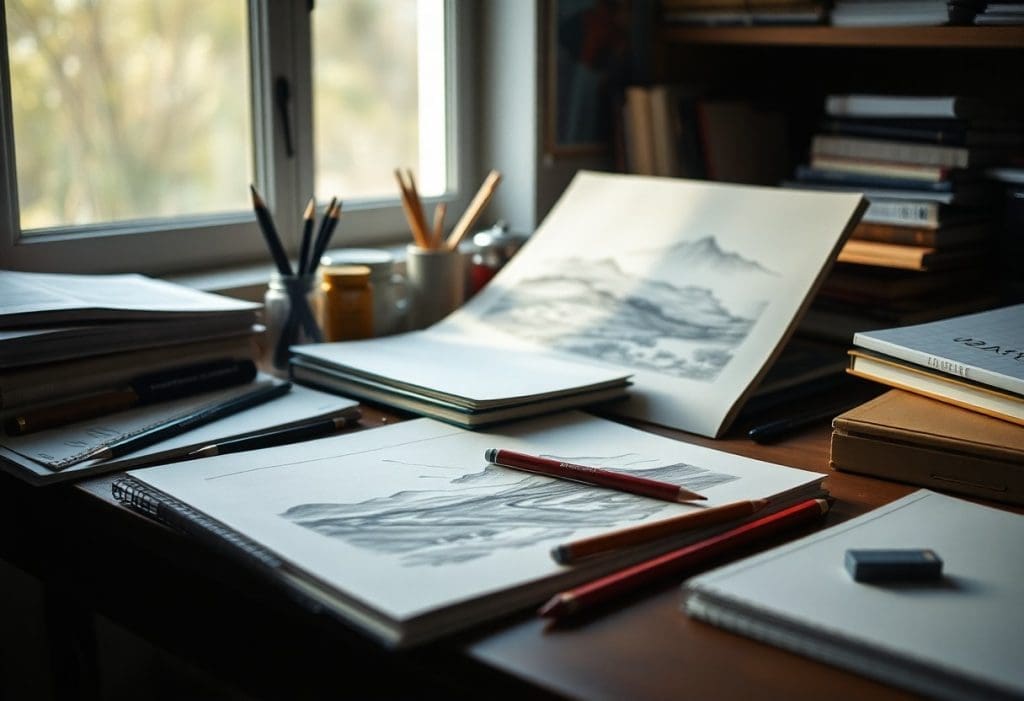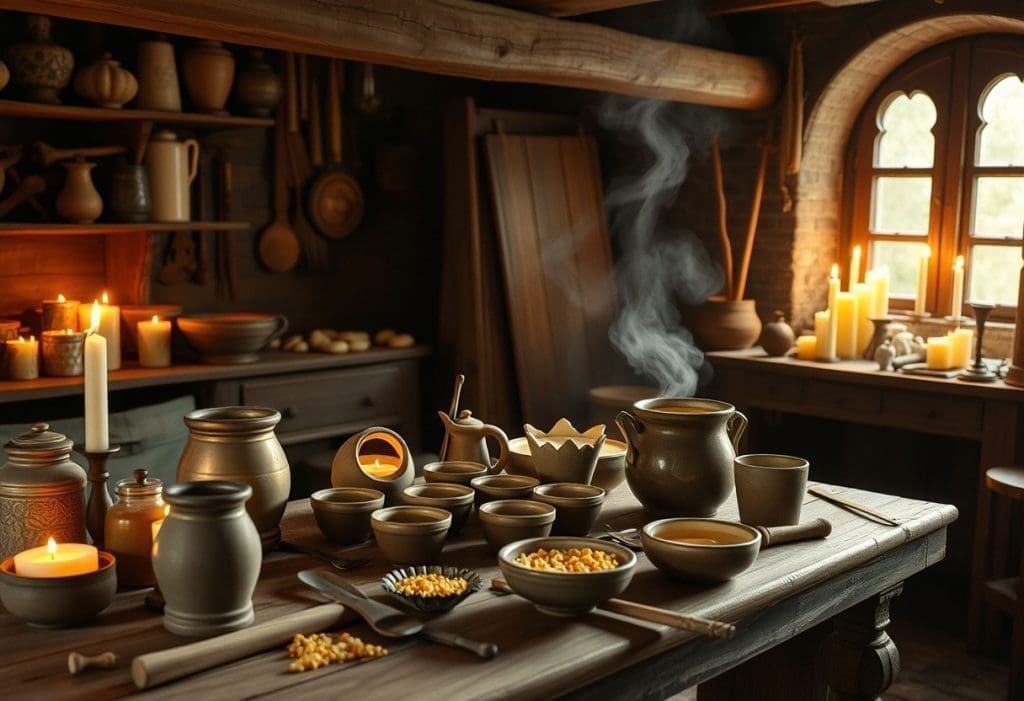Most people feel the urge to express themselves creatively, and drawing is a fantastic way to do just that!
Whether you’re a complete beginner or looking to rekindle your artistic passion, this guide will walk you through the important steps to help you tap into your creativity and develop your drawing skills.
With a little practice and the right mindset, you’ll soon discover the joy of putting pencil to paper and bringing your ideas to life.
So grab your materials, and let’s get started on how to get into drawing!
How to Get Into Drawing as a Hobby
While venturing into the world of drawing can feel intimidating, remember it’s all about practice and exploration.
Just find what inspires you, and allow your creativity to flow.
Start simple, focus on basic shapes, and don’t hesitate to experiment.
Even the greatest artists began with a single stroke, so take your first step today!
Basic Tools and Materials
On your drawing journey, the right tools can make all the difference.
A set of pencils in varying hardness, quality paper, and erasers are great starters.
You might also want some charcoal, colored pencils, or markers for added creativity. It’s all about finding what feels best for you.
If you want to make it easy and quick, you can pick up a drawing kit on Amazon for less than $20!
Setting Up Your Workspace
With a clean and dedicated workspace, you can truly unleash your creativity.
Choose a spot that inspires you, whether it’s near a window or in a cozy corner of your home.
Be sure your drawing materials are organized and easily accessible, so you can flow naturally from one idea to the next. Materials that suit your style can significantly enhance your drawing experience.
A sturdy table or desk and a comfortable chair are important, as they provide stability and support during your creative sessions.
Additionally, consider good lighting to help you see your work clearly, and perhaps even some soft music in the background to maintain a relaxed atmosphere.
Tailor your space to what makes you feel the most inspired and “in the zone!”
Building Your Skills
Ideally, you’ll develop your drawing skills gradually. By focusing on foundational techniques and practicing consistently, you’ll build confidence and see improvement over time.
Embrace the journey, and don’t be afraid to make mistakes; they are a part of learning!
Basic Techniques for Beginners
Basic techniques such as lines, shading, and perspective are a great place to start learning how to sketch.
Start by practicing simple shapes, and gradually incorporate more complex subjects.
Explore various pencil strokes and shading methods to add depth to your drawings, creating a solid base for your artistic growth.
Practice Regularly: Tips for Improvement
Set aside time each day to draw, whether it’s a few minutes or a few hours.
Here are some tips to help you improve:
- Keep a sketchbook to track your progress
- Experiment with different styles and subjects
- Join art communities for feedback and inspiration
A great way to stay consistent in your practice is to find enjoyable drawing prompts or challenges.
Make it part of your routine, and soon you’ll look forward to drawing sessions as a means of relaxation and self-expression.
Here are some ideas to keep you motivated:
- Set daily or weekly themes for your sketches
- Participate in online drawing challenges
- Get inspiration from daily life, such as everyday objects or people
As you invest more time in learning, you’ll notice steady improvement over time. This is the right way to get into it, so enjoy your artistic evolution as you continue to grow.
Explore Different Styles
Any artist can benefit from exploring different drawing styles.
Try out various techniques and influences, because these will help you discover what resonates with you.
From realistic depictions to abstract representations, each style offers unique challenges and rewards.
Don’t hesitate to mix and match elements from different styles to create something that truly reflects your artistic vision.
Finding Your Artistic Voice
For you to develop your unique artistic voice, it’s important to reflect on what inspires you.
Look at the work of other artists, and ask yourself what elements speak to you.
Over time, you’ll distill your preferences and techniques into a style that feels authentically yours.
Experimenting with Various Mediums
Even as you explore different drawing styles, don’t forget to experiment with various mediums.
Each medium—be it pencil, ink, charcoal, or digital—offers a distinct way of expressing your ideas and emotions.
For instance, pencil allows for fine details and soft shading, while ink can create bold, defined lines.
Charcoal offers richness and depth, whereas digital tools provide endless flexibility and precision.
By experimenting with each, you’ll discover which mediums you connect with, ultimately enriching your drawing practice and expanding your creative possibilities.
Overcoming Creative Blocks
All artists face creative blocks at some point. The good news is that you can overcome them!
Whether you’re feeling uninspired or intimidated by the blank page, it’s important to acknowledge these feelings and find ways to push through.
Embrace the journey of drawing, knowing that every artist has their ups and downs.
By using the right techniques, you can reignite your passion for drawing and discover your unique voice.
Tips to Stay Inspired
Little things can spark your imagination and keep you engaged with your art. Consider incorporating these tips into your routine:
- Explore new environments by taking your sketchbook outside
- Follow artists on social media for fresh ideas
- Watch tutorials for techniques you want to learn
- Join a local art group or online community
Inspiration in the real world can elevate your creativity to heights you never even imagined.
Strategies for Breaking Through
Little adjustments in your routine can lead to big breakthroughs.
When you’re feeling stuck, try changing your surroundings, such as moving to a different room or visiting a local park.
Sometimes, you’ll be able to reignite your creativity by adopting a new medium. Don’t hesitate to experiment with paints, charcoal, or digital drawing tools.
Even simple exercises, like doodling without any set goal, can help you free your mind and explore new ideas.
Start by setting small, achievable goals each day, like drawing for ten minutes. This makes the task feel less daunting.
Engage in activities that stimulate your mind, such as reading, listening to music, or even going for a walk.
And don’t shy away from collaboration or teaming up with another artist! This partnership can lead to a refreshing exchange of ideas and inspiration, helping you both tap into new creative avenues.
Feedback and Community Engagement
Unlike working in isolation, involvement with a community of fellow artists can elevate your drawing skills significantly.
By engaging with others, you will receive constructive feedback, gain new perspectives, and be inspired by different styles.
Whether through local art groups or online forums, share your experiences and learn from others as much as possible. These activities can foster your growth and motivation as an artist.
Art Groups and Workshops
There’s something incredibly enriching about surrounding yourself with like-minded individuals who share your passion for drawing.
Workshops and group sessions offer hands-on practice, valuable critique, and the chance to learn techniques from more experienced artists.
In these environments, you can ask questions, explore new materials, and connect with an encouraging peer network.
Share Your Work Online
While it may feel intimidating at first, don’t be afraid to share your artwork online. This can be a rewarding way to showcase your progress and engage with a broader audience.
Platforms like social media and art-specific websites help you connect with fellow artists and art enthusiasts, offering a space to receive their thoughts on your work.
Work that you share online can serve as a portfolio of your journey, showcasing your evolution as an artist.
You’ll find that the feedback and encouragement from the community can be invaluable.
By engaging with comments and messages, you’ll not only boost your confidence but also help build connections that can lead to collaborative opportunities, making your art experience even richer.
Continue Your Artistic Journey
Your artistic journey doesn’t have to end here; it can evolve and grow with time.
Take the time to explore new techniques, styles, and mediums. This can keep your passion alive and help you discover your unique voice.
Whether you choose to join an art group or simply set aside dedicated time each week for creativity, you will enhance your skills and confidence simply by pushing your own boundaries.
Every step of the journey is an opportunity for self-expression and growth!
Goals and Challenges
Assuming you want to elevate your drawing skills, aim to set achievable goals and challenges for yourself.
Start small by dedicating a few minutes each day to draw, or tackle specific subjects like portraits or landscapes.
As you progress, feel free to increase the difficulty, such as experimenting with new materials or styles.
Celebrate your achievements along the way, and don’t be afraid to push yourself beyond your comfort zone!
Resources for Further Learning
Whether you’re interested in online courses, books, or community classes, you can easily find a wealth of information tailored to your drawing interests.
Of course, we highly recommend you also seek feedback from other artists, who are usually more than willing to chime in when a budding artist asks for their opinions.
You can also immerse yourself in online platforms like YouTube or art-specific websites that offer free tutorials and tips.
If you prefer a traditional approach, look for books focused on various drawing techniques or join local art classes where you can connect with other aspiring artists.
By engaging with different resources, you will deepen your skills and inspire your creativity.
Conclusion: How to Get Into Drawing
Drawing can be a truly rewarding creative outlet for you.
By exploring different techniques, practicing regularly, and finding inspiration in your surroundings, you’ll develop your unique style over time.
Don’t be afraid to experiment and make mistakes; that’s all part of the process.
Enjoy each moment and let your creativity flow! Happy drawing!



